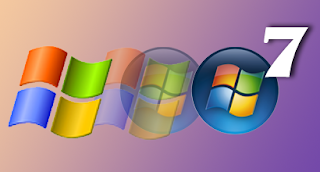If you only use one or two instant messaging applications, such as Yahoo Messenger or Windows Live Messenger, this post is probably not for you. If you find yourself spending several minutes starting up all your IM apps only to have them cluttering up the notification area of your taskbar, you might want to use an IM client. Don't know what that is? It's a third-party application that will handle all (or most) of your separate IM services.
There are lots and lots of IM clients out there. Some of the biggies are Trillian, Adium, Pidgin, and Miranda IM (to name a very few). I have tried Pidgin and Miranda myself, and while these two are loved by many, I have found myself getting along pretty well with one called Digsby. My preference may defy logic, since a widely held opinion is that the other IM clients I mentioned are superior to Digsby in many ways. However, at present I like what I like...and I'm liking Digsby.
My preference may defy logic, since a widely held opinion is that the other IM clients I mentioned are superior to Digsby in many ways. However, at present I like what I like...and I'm liking Digsby.
Why? Mostly the "eye candy" and ease-of use (trademark preferences of novices like us). There are various options for skins in the main window, conversation windows, and even lets you customize chats with specific IM buddies. Another useful feature is tabbing in the conversation window, allowing you to carry on multiple IM conversations without having separate windows cluttering up your screen. Additionally, Digsby has an email notification feature much like the one you're used to in each of your separate IM services, letting you view the message right from the main window.
So what does Digsby support? It will handle AIM, Windows Live IM, Yahoo Messenger, Google Talk IM, ICQ and Jabber; for email it covers Hotmail, Yahoo Mail, Gmail, AOL Mail, and serves as an IMAP/POP as well. Last, but not least, you can also use it for messaging on Facebook, MySpace, Twitter and LinkedIn.
All this functionality comes with a price. Not money, because Digsby is free to download. The sacrifice I'm talking about is resources...Digsby eats up a lot of RAM, even for an instant messaging client. For example, I have four separate IM accounts (each linked to an email account) on my Digsby. When it's running (which is most of the time), it uses around 20MB of RAM...that's quite a bit. You'll have to decide if the convenience and functions are worth its hogging of resources.
The sacrifice I'm talking about is resources...Digsby eats up a lot of RAM, even for an instant messaging client. For example, I have four separate IM accounts (each linked to an email account) on my Digsby. When it's running (which is most of the time), it uses around 20MB of RAM...that's quite a bit. You'll have to decide if the convenience and functions are worth its hogging of resources.
Check it out if you're consistently running more than one or two separate IM windows at a time. And as always, educate yourself before downloading.
Coming Soon: What's on my desktop, Online Publishing, Tips for freeware productivity
Read more...
 Microsoft's next Windows Operating System, Windows 7 will be released sometime this summer (expectations are July). Whether you're using Windows XP or Windows Vista, you'll have the option of upgrading to Windows 7 (instead of having to purchase a full clean install package), and of course licensing cost and upgrade path will be different for XP vs. Vista.
Microsoft's next Windows Operating System, Windows 7 will be released sometime this summer (expectations are July). Whether you're using Windows XP or Windows Vista, you'll have the option of upgrading to Windows 7 (instead of having to purchase a full clean install package), and of course licensing cost and upgrade path will be different for XP vs. Vista.












